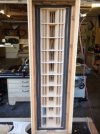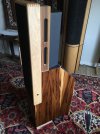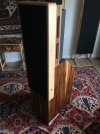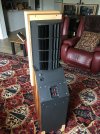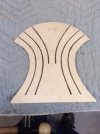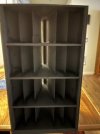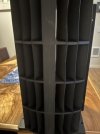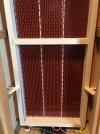Many decades ago I had the opportunity to live with Beveridge electrostatic speakers. Even after trying other ESL's, I always thought that the Bev's presented sound better than any other type of speaker. They had their faults particularly in bass integration but the overall presentation of music was unique. As a DIY type I always thought I could build my own equivalent and maybe simplify the design enough for DIY construction. So, I constructed ESL panels similar to Jazzman53's original design (1'X4') and designed the cabinet to include a 6.5" mid woofer (Scanspeak 18W8531G). After several months of experimentation with different configurations of the Beveridge lens, I found that a modified lens projecting between 120-140 degrees worked well (The original Bev's were 180 degrees) and when integrated with the mid woofer projected sound very similar to the original Beveridge speakers. If you have the correct room configuration you get a wall of sound with no beaming typical of classic ESL panels and yet I can still localize where instruments are playing. The mid woofers do a decent job of blending with the ESL's and are usable to 60-70Hz. I use a subwoofer below that. All drivers are crossed over electronically (a passive PLLXO ). The 2d photo is a rear view of the lens. The 1st photo shows the finished speakers on their optimum side wall placement in my living room. If anyone is interested in more detailed information and pursuing their own construction of this state of the art design I will be happy to provide that.

